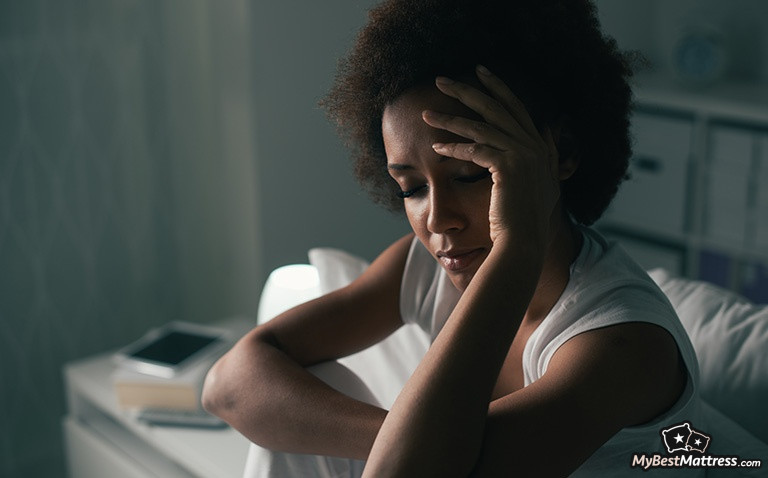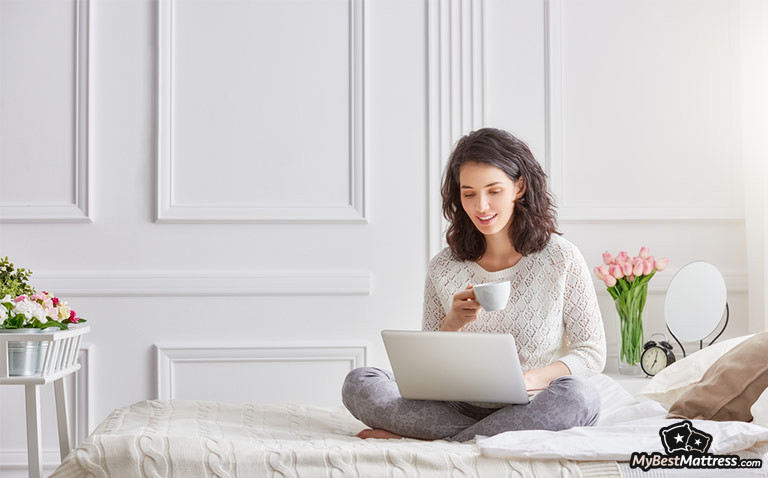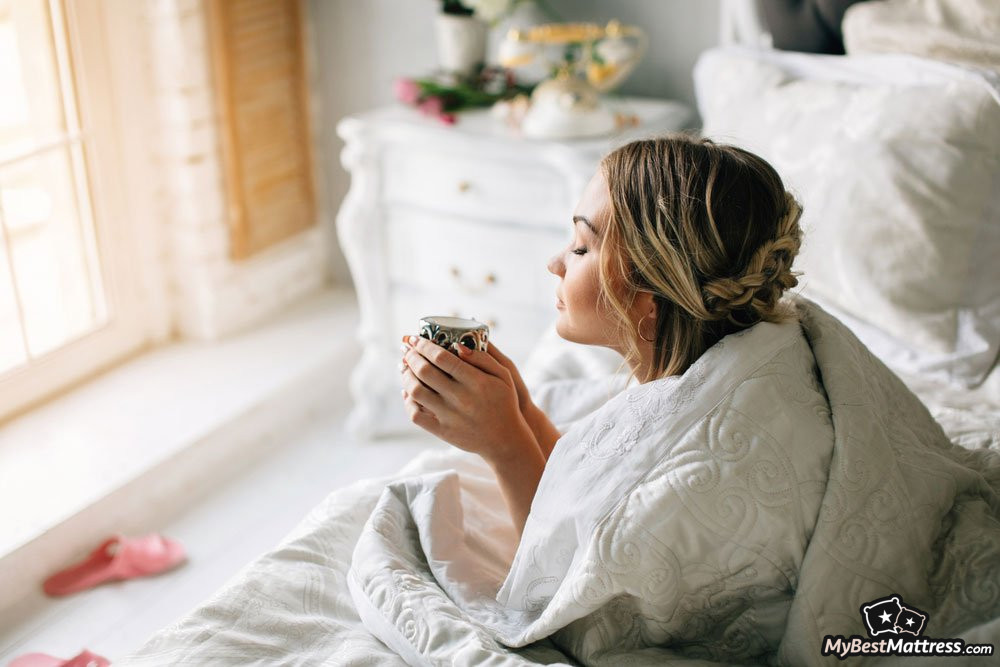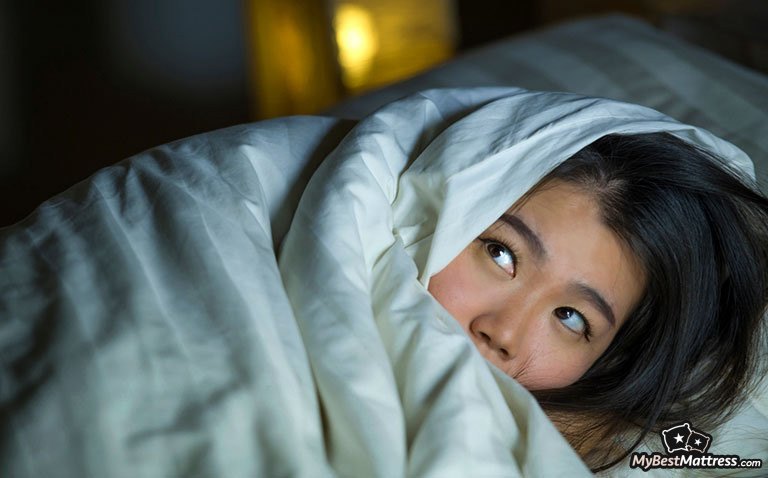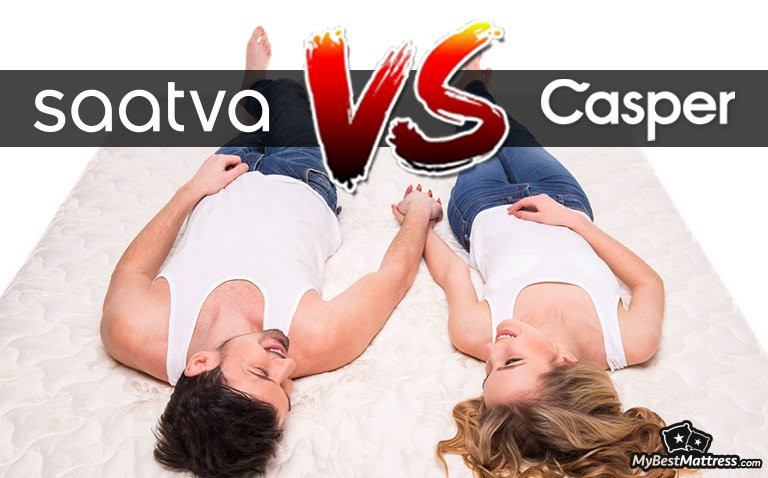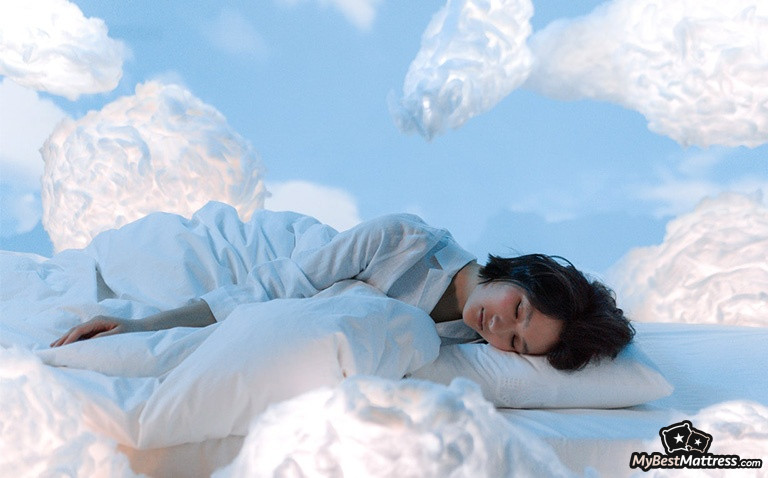
If you've ever seen a ghost at night, you may not need to worry about the paranormal yet. Sleep hallucinations are perfectly normal and it's a fairly common experience. You probably have had at least some hallucination dreams in your life, and hopefully they were pleasant.
However, they are not yet fully explored. Therefore they can often be confused with other sleep abnormalities or with simply having vivid dreams.
You may be wondering why they happen, if they are dangerous, and how to deal with them. In this article, I will give you more insight into those and other questions you may have about hallucinations at night.
Table of Contents
- 1. Sleep Hallucinations — What Are They and What Happens?
- 2. What Causes Sleep Hallucinations
- 3. Hypnagogic vs. Hypnopompic Hallucinations
- 4. Hallucination or Dream: Which One Is It?
- 5. Hallucinations and Other Sleep Abnormalities: Know the Difference
- 6. Should I Worry About Sleep Hallucinations?
- 7. Sleep Hallucinations as Warning Alerts
- 7.1. Narcolepsy
- 7.2. Lewy Body Dementia
- 7.3. Parkinson’s Disease
- 7.4. Schizophrenia
- 8. I Want to Stop Having Sleep Hallucinations. What Do I Do?
- 9. Improving Sleep Quality
- 10. Conclusions
Sleep Hallucinations — What Are They and What Happens?
By definition, a hallucination is “a sensory perception that occurs in the absence of an actual external stimulus”. In other words, it is sensing (i.e. seeing, hearing, or feeling) something that is not actually there.
The most common sleep hallucinations are visual ones. The images seen can be humans, animals, or simply objects. Hearing sounds also happens quite commonly, experiencing smells or tastes — rarely. You could also feel as if you are moving (usually falling or flying), although you're actually perfectly still.
Very often sleep hallucinations are just an inconvenient experience, rather than something serious. Sometimes though, hallucinations can feel extremely real. This can lead to you being confused, scared, or even injuring yourself. Even in mild cases, having hallucinations while sleeping can cause anxiety or stress.
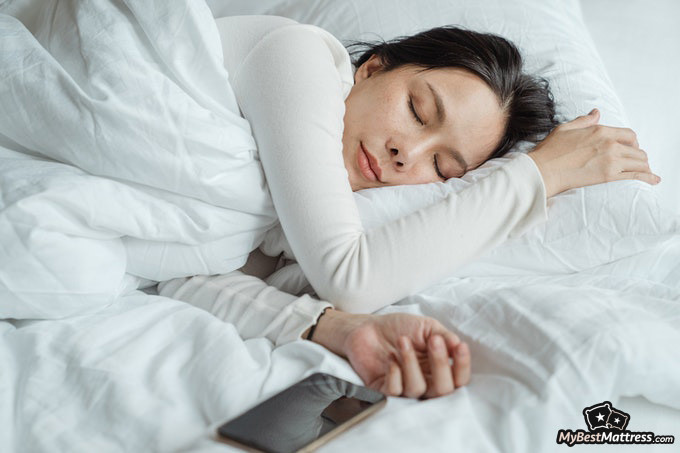
Sleep hallucinations can signal some of the more concerning health conditions. The conditions associated with sleep hallucinations are narcolepsy[1], schizophrenia, Parkinson’s disease[2], Lewy body dementia[3], and some others. Therefore hallucinations at night should not be dismissed easily.
The very word ‘hallucination’ possibly makes you worry about it being related to mental illnesses. Sleep hallucinations by themselves are not an indicator of a mental illness. Nonetheless, they are more likely to happen to someone with such underlying condition or a sleep disorder.
Therefore, if you’re having hallucinations while sleeping, please check in with your doctor or a similar medical professional. Whether you have direct concerns or not, their expert opinion would be useful to make sure you’re healthy and thriving.
What Causes Sleep Hallucinations
Unfortunately, the direct causes of sleep hallucinations are not agreed upon. But there are certain risk factors that increase the likelihood of hallucinations at night.
Certain diseases or conditions, such as Parkinson’s disease or schizophrenia[2], may induce sleep hallucinations. Narcolepsy[1] has also been linked to producing hallucinations while sleeping.
Stress, anxiety, or similar mood disorders can be highly relevant for having sleep hallucinations. To be more specific, these factors directly influence the nature of your sleep, and therefore such anomalies as hallucination dreams are more likely to happen.
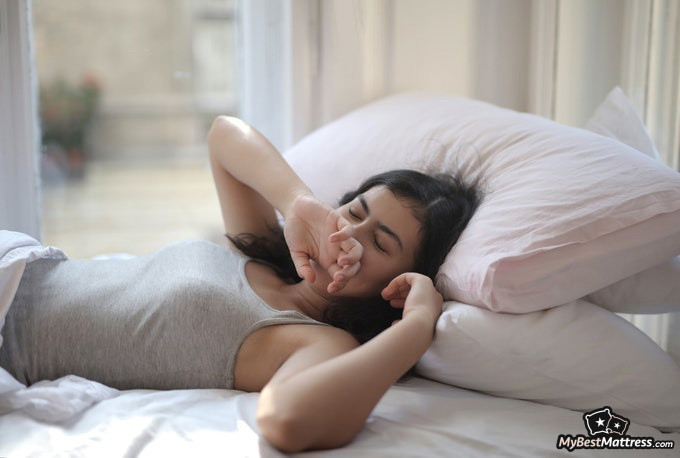
Speaking of which, sleep quality is also a relevant factor. Poor sleep quality or hygiene can produce sleep hallucinations as well. Chronic insomnia, which is related to poor sleep quality, is another potential cause of hallucinations at night.
If you fall asleep easily and sleep heavily, your brain is less likely to have space for hallucinations. The simplest and most effective way this can be achieved is by improving your bedroom setup, such as your mattress or your pillow.
Hypnagogic vs. Hypnopompic Hallucinations
There are two types of sleep hallucinations:
- hypnagogic hallucinations
- hypnopompic hallucinations
Both of these are different from either lucid dreaming or sleep paralysis. The main difference between these two types of sleep hallucinations is when they happen.
Hypnagogic hallucinations happen when you’re about to fall asleep. They are fairly common and almost guaranteed to happen at least once in your life. These hallucinations are one of the core symptoms of narcolepsy.
Hypnopompic hallucinations happen when you’re about to wake up. These hallucinations are also fairly common overall. However, they are significantly less common than hypnagogic ones. Hypnopompic hallucinations can be worrying, but usually they don’t have such strong emotional effects as, for example, nightmares.
Hallucination or Dream: Which One Is It?
There are several differences between hallucination dreams and actual dreams. When they happen, what happens in them, and your power over what happens in them.
Sleep hallucinations are simply a collection of various images, sounds, or sensory feelings. They’re also quite short and simple. Dreams, on the other hand, have proper storylines and plots. Often dreams last for longer and are more elaborate.
Sleep hallucinations and dreams occur at different times. Sleep hallucinations happen either while falling asleep or while waking up. Dreams happen in the last stage of the sleep cycle. To be more specific, dreams happen during the REM (rapid eye movement) stage of dreaming.
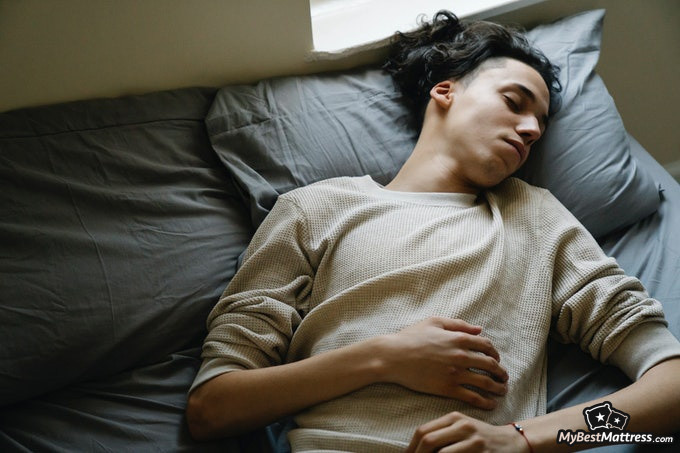
There are contradicting opinions on how easily you can tell if you’re hallucinating, compared to if you’re dreaming. Some sources claim sleep hallucinations feel tremendously real, while others state that generally, it is quite easy to tell that you’re only hallucinating.
Another difference between hallucinations and dreams is that sometimes you’re able to control your dreams. But you cannot control your hallucinations while sleeping.
Hallucinations and Other Sleep Abnormalities: Know the Difference
There are several other sleep disturbances that can be confused with sleep hallucinations. It can be important to recognize the distinction between them. Knowing the exact issue, you’d be able to take the best action for your sleep or for your health accordingly.
Lucid dreaming is when you are aware that you're in a dream. Sometimes you’re able to take control of the dream’s plot or characters, but not necessarily. Similar to hallucination dreams, lucid dreams are not dangerous nor a disorder as such. However, they can indicate a different health problem.
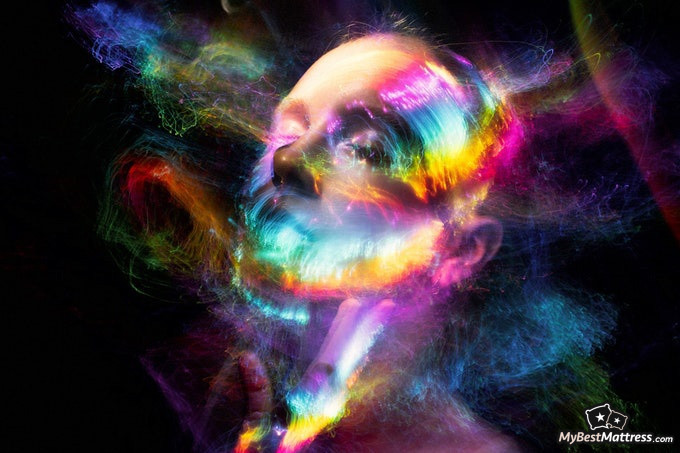
Lucid dreaming is different from sleep hallucinations because in lucid dreams you’re aware that you’re dreaming, in hallucination dreams — you're not. Also, you are unable to control hallucinations while sleeping, but you are able to control the dream in lucid dreaming or even learn how to lucid dream.
Night terrors are episodes of prolonged fear or panic during sleep. Usually, you would not remember the night terror after waking up or even that you had one. It is common to scream or move unconsciously during a night terror episode. The latter can lead to falling out of bed. Night terrors can happen for both adults and children.
The main difference from sleep hallucinations is that sleep hallucinations happen while either falling asleep or waking up; night terrors happen during sleep. Also, most often you do remember your sleep hallucinations, but rarely night terrors.
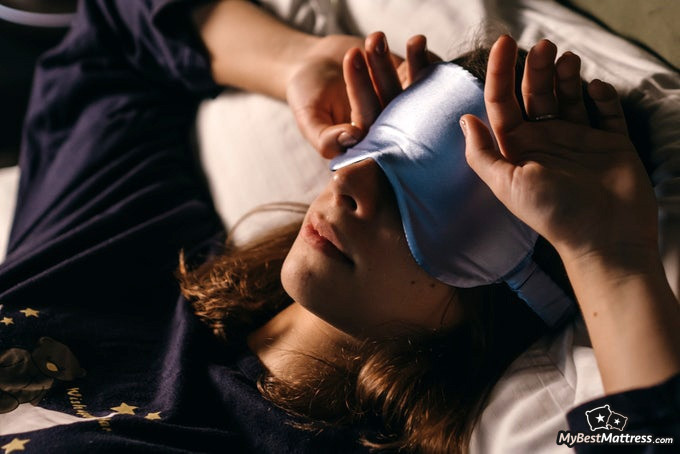
Nightmares are essentially unpleasant or scary dreams. Usually the person does remember what they dreamed when they wake up. At the very least, they remember they had some sort of nightmare.
As convincing as they sometimes can be, nightmares are not harmful. Well, aside from some short-term stress due to all the spooky things you just dreamed about. Of course, not experiencing them definitely makes you feel and sleep better.
Sleep hallucinations differ from nightmares in that nightmares will most often cause you to wake up. Hallucinations while sleeping don’t have an effect on your state of being asleep or awake.
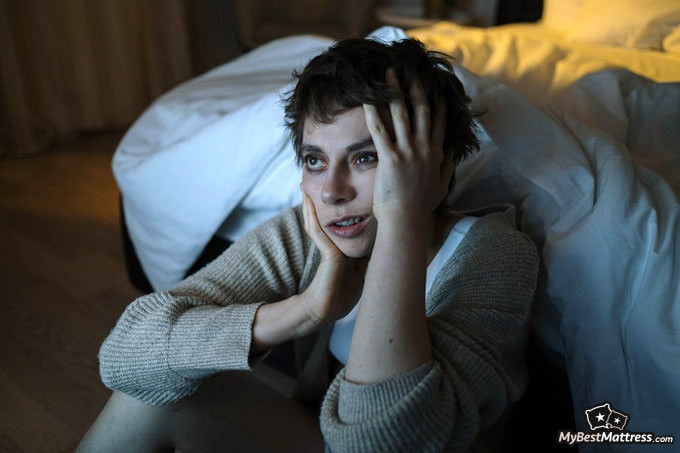
Sleep paralysis is probably the most intense sleep disturbance experience. Like sleep hallucinations, you experience it either while falling asleep or waking up. Quite often sleep hallucinations happen while in sleep paralysis, but it’s important to understand these are two different sleep disturbances.
Physically, it happens due to your body being relaxed and somewhat asleep, while your brain is alert and awake. You will feel awake and aware of yourself and your surroundings, but unable to act or move, probably even talk.
The main difference between them is that during sleep paralysis you are fully immobile. Being pressed onto the bed is a very common experience during sleep paralysis. While during sleep hallucinations, you very much can move around and even injure yourself.
Should I Worry About Sleep Hallucinations?
Both yes and no. As it often is with health matters, there is no sure answer. Sleep hallucinations are short and relatively simple. They don’t cause health issues nor are an indicator for health issues by themselves.
On the other hand, they can feel extremely real, and cause both mental and physical distress. You can feel scared or threatened by whatever you hallucinate, and therefore experience anxiety or stress.
In addition, you can also cause physical damage to yourself. Thinking you’re flying, you can end up falling out of your bed and injure yourself that way. One of the more common sleep hallucinations is bugs crawling all over one’s body, and therefore they can scratch themselves.
Sleep Hallucinations as Warning Alerts
Sleep hallucinations is not a mental or physical health issue. However, there are certain diseases and conditions that are linked to having sleep hallucinations. So if you have any additional symptoms that correspond to one of those diseases, please visit a medical professional ASAP.
Narcolepsy
Narcolepsy is a long-term neurological disorder that makes one fall asleep at random or inappropriate times. It happens because the brain cannot properly control the patterns of sleeping and being awake.
Most common symptoms of narcolepsy are excessive sleepiness during the day and falling asleep suddenly. More rarely, laughing or getting angry can trigger weakness and lack of muscle control. Additional symptoms include excessive dreams, waking up during the night, hypnagogic hallucinations, or even sleep paralysis.
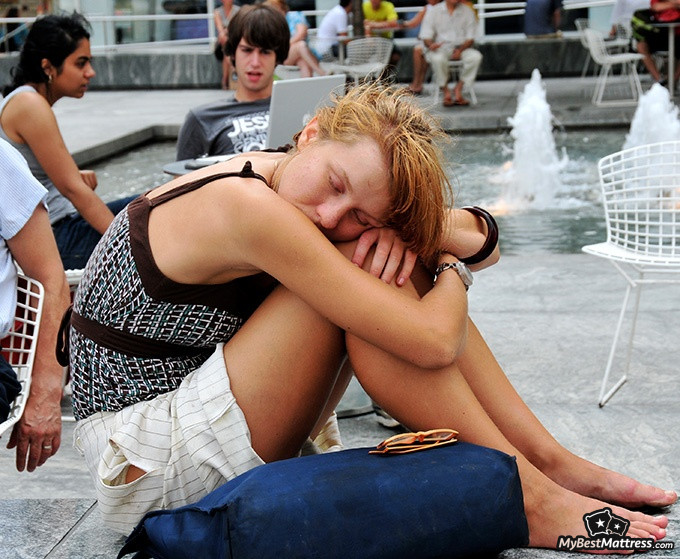
Narcolepsy is not harmful to your health as such, but it can have a considerable effect on your daily life. The exact causes of this condition are not fully understood, but the currently believed triggers are hormonal issues, infection or certain vaccinations, and major psychological stress.
Unfortunately, there’s no current cure for narcolepsy, but adhering to a regular and strict sleeping regime will greatly decrease the impact it has on your daily routine and life.
Latest Saatva Coupon Found:
UP TO $500 OFF
Limited-time Saatva Sale
We're sharing a limited-time Saatva mattress discount with our readers! Grab this deal & enjoy your new mattress with huge discounts.
Lewy Body Dementia
Standard dementia is not a specific disease, but the general tendency of lacking the ability to remember, think, or make decisions in a day-to-day life. For the most part, dementia affects senior adults.
Lewy body dementia has the symptoms of standard dementia, but people with this dementia form have balance or movement issues as well. They also often experience sleepiness during the day, trouble sleeping at night, or have visual hallucinations[4].

Lewy body dementia is caused by build up of proteins into masses. Those masses are the titular Lewy bodies. People with a greater chance to develop it are over 60 year-olds, and those who have a family history of either this dementia type or Parkinson’s disease. Men are usually affected more often than women.
Lewy body dementia does not have a cure. However, many symptoms can be mitigated by using medication. Certain medications, used for Alzheimer’s or Parkinson’s, can be used to treat some of the symptoms. Individual consultations with the doctor are essential in order to find the right combination for each patient.

Did you know?
Have you ever wondered which mattresses are approved as the best for sleep?
See & compare TOP mattresses side by sideParkinson’s Disease
Parkinson’s disease is a neurodegenerative disorder. It affects dopamine producing neurons in a certain area of the brain. Due to this, cells in the nervous system stop working or die. Parkinson’s mostly affects the motor system, in other words — movement.
The symptoms of Parkinson’s disease develop over a number of years. The exact speed of such development varies for each person. Main symptoms are tremors, slowness of movement, rigid limbs, issues with balance and gait. In some cases, sleep behavior disorders are also present.
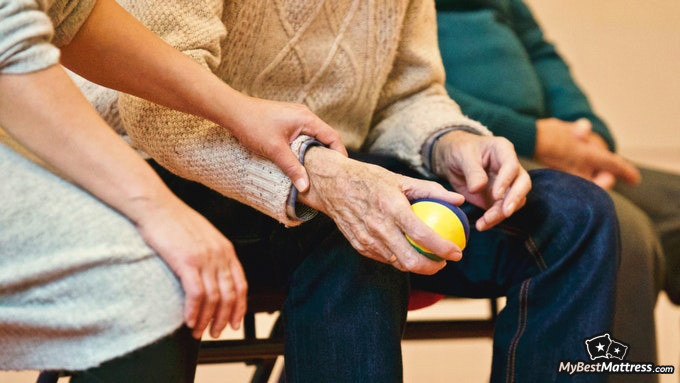
The exact cause for Parkinson’s disease is unknown. It is believed to be a combination of both hereditary and environmental factors. Prior head injuries or exposure to certain pesticides also increase the risk of having this disease. Tea or coffee drinkers[5] may have a slight protective effect against Parkinson’s.
While Parkinson’s is not a terminal disease, various related complications can be severe. Sadly, there is no cure for this disease. However, various medicational or even surgical treatments are present. These treatments reduce the symptom effects, but they are less impactful as the disease progresses.
Schizophrenia
Schizophrenia is a serious mental disorder. People who have schizophrenia, have difficulties to tell what’s real and what’s not. Usually it starts within the age of 16-30 (males tend to show symptoms earlier than females), and in many cases, doesn’t completely resolve.
There are three types of symptoms of schizophrenia. Psychotic symptoms involve distorted perception of reality. People with schizophrenia experience hallucinations (most often hearing voices), delusions (especially paranoia), or thought disorder. The latter includes unusual thinking and disorganized speech patterns.
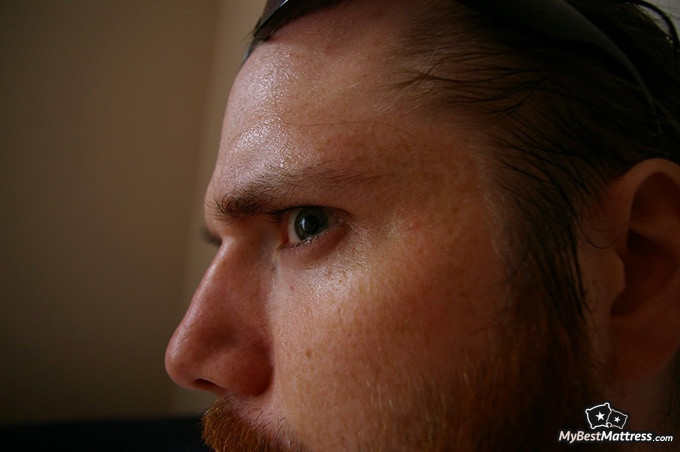
Negative symptoms revolve around lack of motivation, apathy, social withdrawal, or overall difficulty to function socially. They include behavior such as not feeling pleasure, reduced speaking, or barely showing any facial expressions.
Cognitive symptoms are about memory, attention, and concentration. People with schizophrenia often have difficulties learning new things, remembering scheduled events, solving puzzles, or simply paying close attention. It also means lower speed of processing information.
Schizophrenia does have a hereditary component. However, schizophrenia does need certain environmental factors to develop as well. These factors can be living in stress or in poverty. But they can be related to an infection or nutritional issues even before birth. It can also be influenced by brain structure or substance use.
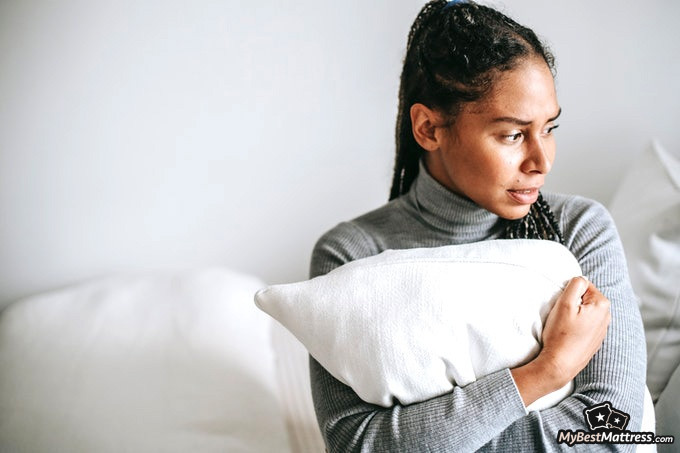
Because the causes of schizophrenia are not yet fully determined, the treatment focuses more on management of daily life, rather than to be a full cure. The main treatment is antipsychotic medications. Most antipsychotic medications are pills or liquids, though sometimes injections are administered once or twice per month.
Various behavioral therapies are also a common practice, especially combined with the medication treatments. Cognitive behavioral therapy or other social therapies (e.g. family or group therapy sessions) are also used to improve the quality of life for schizophrenia patients.
I Want to Stop Having Sleep Hallucinations. What Do I Do?
Sleep hallucinations are not dangerous as such. If they have no or very little effect on your life and well-being, you can safely continue to live with them if you so choose. But while non-harmful, they can still be inconvenient or result in poor sleep quality.
There is no guaranteed way to completely stop hallucinations at night. However, there are certain measures you can take that will highly decrease the chance of it. Most of these measures are quite easy and accessible.
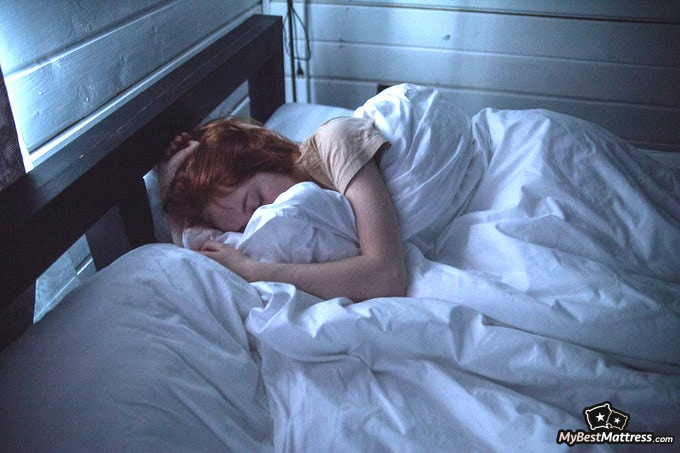
As with numerous sleep disorders or disturbances, high sleep quality is absolutely crucial to make sure you have a good night’s rest. Sleep quality depends on the amount of sleep you have per night, the way your bedroom is set up, what bed or mattress you use, your nightly routine, and other factors.
While it may sound quite drastic, a change of lifestyle and daily routine can do wonders for dealing with sleep hallucinations. Improving your dietary regime, starting regular exercise, or having a more regular routine overall can highly improve your well-being. Through that, it can also decrease hallucinations at night.
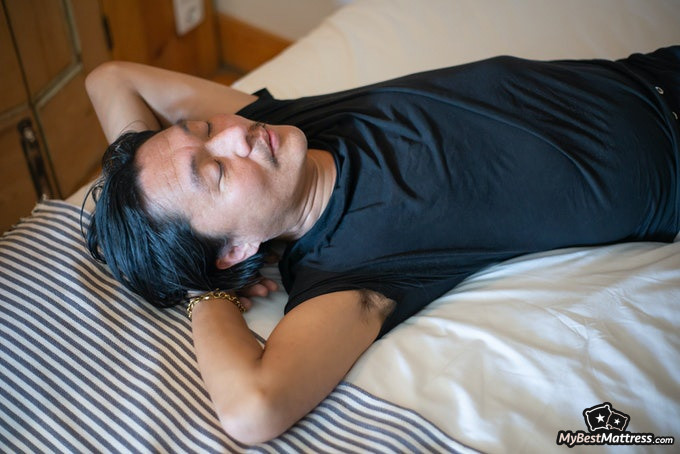
It would also help to decrease or eliminate the usage of alcohol, smoking, or recreational drugs. Such substances are more likely to create distorted perception, and that does include perception during sleep. Lower consumption of such substances will decrease the likelihood of sleep hallucinations as well.
Are you using any prescription medication? Depending on the chemical substances, any medication that you’re using can affect the images you see during sleep. Please consult with your doctor, to double-check if your current medication may have such an effect and induce hallucinations while sleeping.
Improving Sleep Quality
Good sleep quality is useful not just for alleviating sleep hallucinations. It has been scientifically proven to boost mental performance[6]. In addition, poor sleep quality leads to an increased body mass index[7], or even a higher risk of a stroke[8].
According to Centers for Disease Control and Prevention, an adult (within 18-60 years) should sleep at least 7 hours per night. Of course, the number of hours you spend for sleep is not the same as its quality, but it’s still important.
Aside from the amount slept, overall sleep hygiene is also a significant factor. Sleep hygiene includes your nightly routine, the way your bedroom is set up, your habits before bedtime, etc.
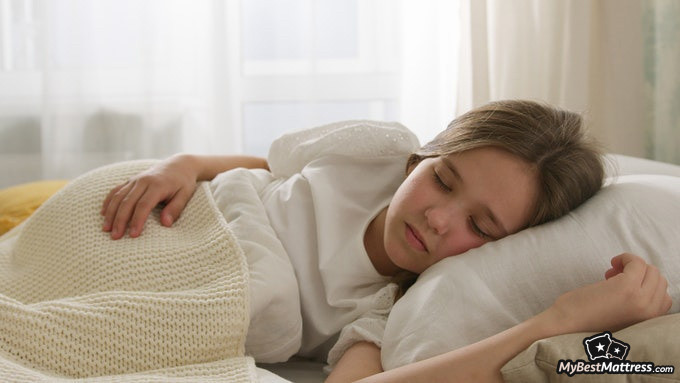
Let’s talk about your bedroom. No, I’m not being invasive regarding your personal life. I’m simply saying that your bedroom should be a comfortable, calm and relaxing space for you to sleep. Make sure to let in some fresh air, dim the lights, and try not to have loud noises (for example, from a TV) shortly before sleep.
I’m not sure what the most important part of your bedroom setup is, but for me it’s the mattress.
When my old mattress was wearing away, I could have had the perfect sleep schedule, the calmest atmosphere, or the healthiest habits for my pre-sleep routine. But I could not sleep well. I was tossing and turning, and in the morning I felt sore and uncomfortable, no matter how long I had slept.
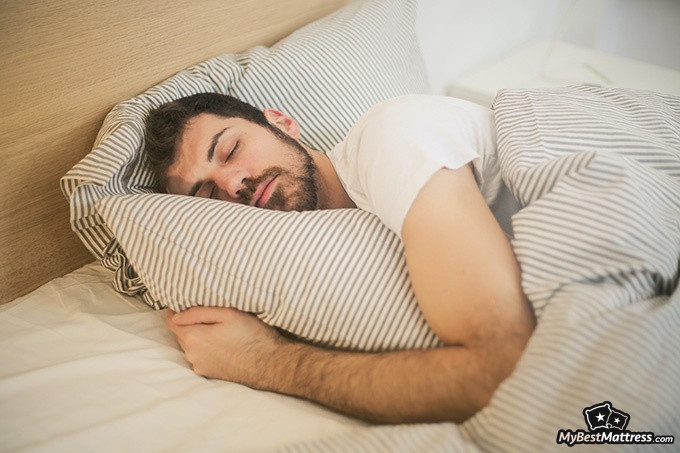
Because a proper mattress is crucial for your sleep, I would recommend you to take a look at the top 3 mattresses.
Saatva. Saatva mattress is a silent, innerspring mattress that successfully maintains a natural temperature while you sleep. It is quite heavy and does not have great motion isolation. However, it has great edge support. And that is very useful to keep you in bed and not fly off if you have flying-related hallucination dreams.
Buy Saatva mattresses starting at $887 HERE.
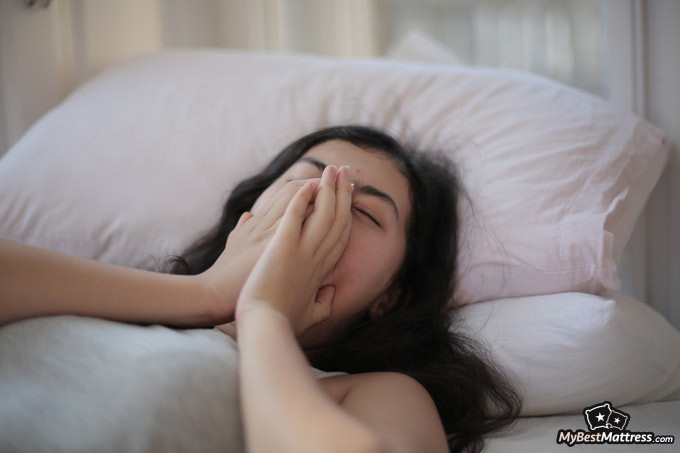
Puffy. No, I’m not dreaming about puffy clouds, there’s actually a Puffy brand mattress. Puffy is a memory foam mattress with superb motion isolation. It does have weak edge support, but it barely produces any noise. And like with many other things, with mattresses silence is gold.
Buy Puffy mattresses starting at $599 HERE.
Layla. Layla is another memory foam mattress, but it’s also copper-infused. It’s flippable, giving you options for having either a softer or a firmer side. It has non-substantial edge support, but great motion isolation.
Buy Layla mattresses starting at $599 HERE.
When you have a comfortable and supportive mattress, you may consider a high-quality pillow as well. An insufficient pillow may cause aches and pains, and pillow shape plays an important part in pillow comfort[9]. Therefore, a good pillow also improves your sleep quality.
| SAATVA | PUFFY | LAYLA | |
|
|
| |
|
|
| |
| Visit site Read Review | Visit site Read Review | Visit site Read Review |
Table: Pros and cons of Saatva, Puffy, and Layla mattresses
The right mattress and bedding is the quickest and simplest way to improve your sleep quality. There are, of course, additional methods you can improve it, though they will take more time and require lifestyle changes from you.
If a natural, pain-free, and easily arranged way to improve your sleep quality sounds like music to your ears — you should actually try having music in your ears. Music therapy is one of non-medication approaches to deal with sleep disturbances, and it does improve the quality of your sleep[10].
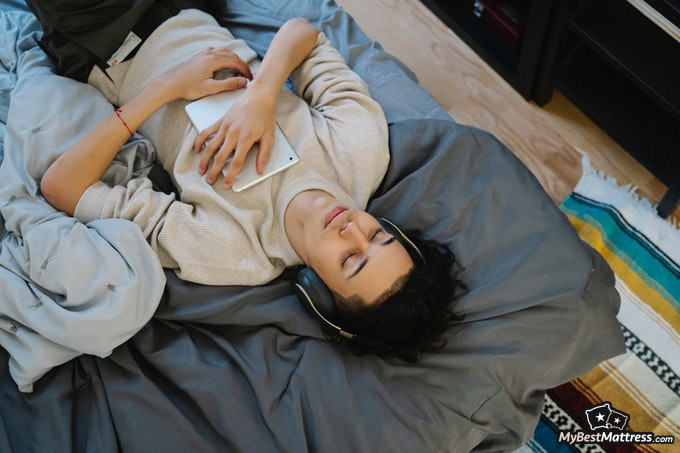
One of alternative sensory methods to relax before sleep is aromatherapy. Various experiments and trials have shown that aromatherapy does help to improve your sleep quality[11]. You can use your scent of choice as either an inhalation patch or essential oil.
Another way of improving your sleep is knowing what may be wrong. In other words, you could monitor and track your sleep patterns, or even what dreams you have. This way, you’ll be able to analyze and notice something different or alarming in your sleep habits.
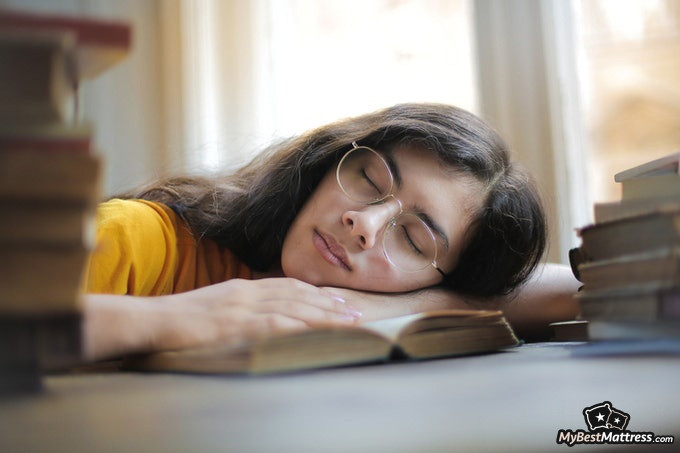
Of course, knowing what may cause issues, will certainly help you to mitigate or even eliminate them in a timely manner. An easy way to track your sleep habits is a sleep diary, or a sleep journal. It has been tested that sleep diaries reliably show sleep patterns[12] and help to examine sleep habits.
Naturally, for proper scientific results, you would need either to wear an actigraph or visit a hospital for a proper sleep study. However, for individual purposes, a simple sleep journal or diary would be enough.

An alternative natural method to relax and ease into sleep that can be your cup of tea is… well, a cup of tea. Studies show that certain types of tea[13] can enhance your sleep quality. And surely these are not the only types of tea to help with your sleep.
You could also try working out before sleep. It has been scientifically proven that light exercise before bed improves sleep quality in adults[14]. You should finish your exercise session at least one hour before bedtime though.
Conclusions
Sleep hallucinations are when you see, hear, or otherwise sense something that is not actually there during your sleep cycle. They happen either while falling asleep, or waking up.
Hallucinations at night are fairly common and are not a health issue in themselves. However, they can signal some other health conditions or disorders. Hallucination dreams can be mixed up with similar sleep abnormalities, but they are distinct.
Sleep hallucinations can still allow you to live your life without much burden. However, something as easy as changing your mattress and pillow will greatly help you to sleep better and significantly reduce sleep hallucinations. You can also use additional measures like sound therapy, aromatherapy, or drinking relaxing tea.
Sleep hallucinations are definitely not that much of a boogeyman as they may sound at first. Make sure you have good sleep hygiene, and hallucinations at night should not be a problem.
Scientific References
1. Claudio L A Bassetti, Antoine Adamantidis, Denis Burdakov, et al.: 'Narcolepsy - clinical spectrum, aetiopathophysiology, diagnosis and treatment'
2. Flavie Waters, Jan Dirk Blom, Thien Thanh Dang-Vu, et al.: 'What Is the Link Between Hallucinations, Dreams, and Hypnagogic-Hypnopompic Experiences?'
3. Michael H Connors, Lena Quinto, Ian McKeith, et al.: 'Non-pharmacological interventions for Lewy body dementia: a systematic review'
4. Shooka Esmaeeli, Kathleen Murphy, Gabriel M Swords, et al.: 'Visual hallucinations, thalamocortical physiology and Lewy body disease: A review'
5. Gangu Hu, Siamak Bidel, Pekka Jousilahti, et al.: 'Coffee and tea consumption and the risk of Parkinson's disease'
6. Michael K Scullin, Donald L Bliwise: 'Sleep, cognition, and normal aging: integrating a half century of multidisciplinary research'
7. Juan J Madrid-Valero, José M Martínez-Selva, Juan R Ordoñana: 'Sleep quality and body mass index: a co-twin study'
8. Lue Zhou, Kuai Yu, Liangle Yang, et al.: 'Sleep duration, midday napping, and sleep quality and incident stroke: The Dongfeng-Tongji cohort'
9. Mi Yang Jeon, HyeonCheol Jeong, SeungWon Lee, et al.: 'Improving the quality of sleep with an optimal pillow: a randomized, comparative study'
10. Nehtap Kavurmaci, Nuray Dayapoğlu, Mehtap Tan: 'Effect of Music Therapy on Sleep Quality'
11. Ezgi Karadag, Sevgin Samancioglu, Dilek Ozden, et al.: 'Effects of aromatherapy on sleep quality and anxiety of patients'
12. Jihyun Baek, Kihye Han, Smi Choi-Kwon: 'Sleep diary- and actigraphy-derived sleep parameters of 8-hour fast-rotating shift work nurses: A prospective descriptive study'
13. A Ngan, R Conduit: 'A double-blind, placebo-controlled investigation of the effects of Passiflora incarnata (passionflower) herbal tea on subjective sleep quality'
14. Jan Stutz, Remo Eiholzer, Christina M Spengler: 'Effects of Evening Exercise on Sleep in Healthy Participants: A Systematic Review and Meta-Analysis'
Leave your honest feedback
Leave your genuine opinion & help thousands of people to choose the best mattress. All feedback, either positive or negative, are accepted as long as they’re honest. We do not publish biased feedback or spam. So if you want to share your experience, opinion or give advice - the scene is yours!



